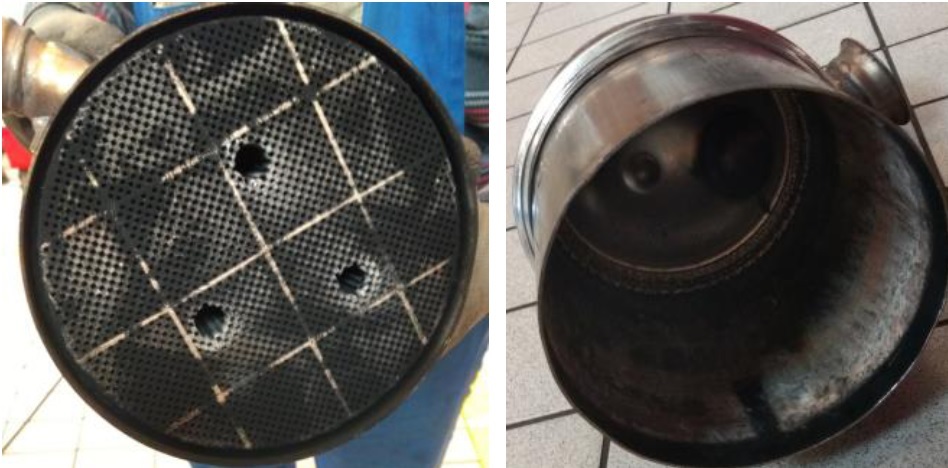Current issue
Online first
Archive
About the Journal
Aims and scope
Publisher and Editorial
Advertising policy
For Authors
Paper review procedures
Procedures protecting authentic authorship of papers
Paper preparation manual
Plagiarism check
Publication ethics
Reviewers
APC
Editorial and Scientific Board
Contact
Reviewers
Comparative study of aftermarket and OEM DPFs for Periodic Technical Inspections (PTI) compliance with new PN emission limits
1
Instytut Techniki, Akademia Nauk Stosowanych, Poland
2
Senior Engineer at Tenneco Automotive Eastern Europe Sp. z o. o., Gliwice, Poland
Submission date: 2025-06-09
Final revision date: 2025-07-10
Acceptance date: 2025-07-18
Online publication date: 2025-08-02
Publication date: 2025-11-14
Corresponding author
Damian Kurzydym
Instytut Techniki, Akademia Nauk Stosowanych, Akademicka 1, 47-400, Racibórz, Poland
Instytut Techniki, Akademia Nauk Stosowanych, Akademicka 1, 47-400, Racibórz, Poland
Combustion Engines 2025,203(4), 126-137
KEYWORDS
TOPICS
ABSTRACT
This study evaluates the performance of aftermarket and OEM diesel particulate filters (DPFs) using a particle number counter (PNC) during stationary Periodic Technical Inspection (PN-PTI) tests. Several European countries have already implemented regulations requiring this test to ensure that vehicles equipped with DPFs meet the stringent particle number (PN) emission limits. In this work, measurements were conducted on various vehicles with new and conditioned DPFs. The results revealed significant variability in PN emissions, with some filters failing to meet the required limits. Key contributors to elevated PN levels were identified, including filter aging and inadequate conditioning procedures. Based on the findings, the paper proposes practical recommendations and diagnostic approaches to support compliance with PN-PTI test requirements.
REFERENCES (20)
1.
Bari S, Marian R. Evolution of risk of diesel engine emissions on health during last 4 decades and comparison with other engine cycles – an innovative survey. Proceedings of the ASME 2015 International Mechanical Engineering Congress & Exposition. IMECE2015-51887. 2015. https://doi.org/10.1115/IMECE2....
2.
Bielaczyc P, Szczotka A, Woodburn J. An overview of particulate matter emissions from modern light duty vehicles. Combustion Engines. 2013;153(2):101-108. https://doi.org/10.19206/ce-11....
3.
Botero ML, Londoño J, Agudelo AF, Agudelo JR. Particle number emission for periodic technical inspection in a bus rapid transit system. Emission Control Science and Technology. 2023;9:128-139. https://doi.org/10.1007/s40825....
4.
Ge Z, Zhao W, Lyu L, Zhu Z. Fast identification of the failure of heavy-duty diesel particulate filters using a low-cost condensation particle counter (CPC) based system. Atmosphere. 2022;13(2):268. https://doi.org/10.3390/atmos1....
5.
Giechaskiel B, Lähde T, Suarez-Bertoa R, Valverde V, Clairotte M. Comparisons of laboratory and on-road type-approval cycles with idling emissions. Implications for periodical technical inspection (PTI) sensors. Sensors. 2020;20(20):5790. https://doi.org/10.3390/s20205....
6.
Hammer T, Roos D, Giechaskiel B, Melas A, Vasilatou K. Influence of soot aerosol properties on the counting efficiency of instruments used for the periodic technical inspection of diesel vehicles. Aerosol Research. 2024;2(2):261-270. https://doi.org/10.5194/ar-2-2....
7.
Harris SJ, Maricq MM. Signature size distributions for diesel and gasoline engine exhaust particulate matter. J Aerosol Sci. 2001;32(6):749-764. https://doi.org/10.1016/s0021-....
8.
Jarosiński W, Wiśniowski P. Verifying the efficiency of a diesel particulate filter using particle counters with two different measurements in periodic technical inspection of vehicles. Energies. 2021;14(16):5128. https://doi.org/10.3390/en1416....
9.
Kadijk G, Elstgeest M, Ligterink NE, Van Der Mark PJ. Investigation into a periodic technical inspection (PTI) test method to check for presence and proper functioning of diesel particulate filters in light-duty diesel vehicles – part 2. TNO Report R10530. 2017. https://doi.org/10.13140/RG.2.....
10.
Kadijk G. Particles Matter: Getting a grip on Diesel Particulate Filters with an effective particle number test. Emission Training Services. 2021.
11.
Kim J, Lee J, Seo J, Bauman J, Hornback L, Joo H, Lindeman D. Test method development and understanding of filter ring-off-cracks in a Catalyzed Silicon Carbide (SiC) Diesel Particulate Filter system design. SAE Technical Paper 2008-01-0765. 2008. https://doi.org/10.4271/2008-0....
12.
Mayer A, Czerwiński J, Bonsack P, Karvonen L. DPF regeneration with high sulfur fuel. Combustion Engines. 2012;148(1):71-81. https://doi.org/10.19206/ce-11....
13.
Melas A, Franzetti J, Suárez-Bertoa R, Giechaskiel B. Evaluation of two particle number (PN) counters with different test protocols for the periodic technical inspection (PTI) of gasoline vehicles. Sensors. 2024;24(20):6509. https://doi.org/10.3390/s24206....
14.
Melas A, Selleri T, Suárez-Bertoa R, Giechaskiel B. Evaluation of measurement procedures for solid particle number (SPN) measurements during the periodic technical inspection (PTI) of vehicles. Int J Environ Res Public Health. 2022;19(13):7602. https://doi.org/10.3390/ijerph....
15.
Melas A, Selleri T, Suárez-Bertoa R, Giechaskiel B. Evaluation of solid particle number sensors for periodic technical inspection of passenger cars. Sensors. 2021;21(24):8325. https://doi.org/10.3390/s21248....
16.
Sala R, Kołek K, Konior W. Methodology of diesel particulate filter testing on test bed for non-road engine application. Combustion Engines. 2022;190(3):72-79. https://doi.org/10.19206/ce-14....
17.
Ulrich A, Mayer A, Kasper M, Wichser A, Czerwiński J. Emission of metal-oxide particles from IC-engines. Combustion Engines. 2011;144(1):72-78. https://doi.org/10.19206/CE-11....
18.
Yamada H. Improving methodology of particulate measurement in periodic technical inspection with high-sensitivity techniques: laser light scattering photometry and particle number method. Emission Control Science and Technology. 2019;5:37-44. https://doi.org/10.1007/s40825....
19.
Zhang D, Li M, Li L, Deng J, Li Y, Zhou R et al. Failure analysis and reliability optimization approaches for particulate filter of diesel engine after-treatment system. Int J Auto Manufacturing and Materials. 2025;4(1):2. https://doi.org/10.53941/ijamm....
We process personal data collected when visiting the website. The function of obtaining information about users and their behavior is carried out by voluntarily entered information in forms and saving cookies in end devices. Data, including cookies, are used to provide services, improve the user experience and to analyze the traffic in accordance with the Privacy policy. Data are also collected and processed by Google Analytics tool (more).
You can change cookies settings in your browser. Restricted use of cookies in the browser configuration may affect some functionalities of the website.
You can change cookies settings in your browser. Restricted use of cookies in the browser configuration may affect some functionalities of the website.



